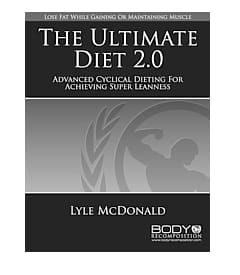For far too many decades, dieters and diet books focused only on bodyweight. If it went down, that was good. If it didn’t or went up, that was bad. And while body weight is more useful than some think, it doesn’t tell the entire story. Rather, body composition, and altering it, is where the real focus should lie.
In the following guide I will address a number of topics related to body composition. First, to ensure everyone is starting on the same page, let me define what it actually is.
Body Composition Basics: What are you Made Of?
I’m not talking here about the scientifically proven fact that little girls are made of sugar and spice and everything nice while boys are made of slugs, and snails and puppy dog tails; rather, I want to talk about what the human body is composed of in biological terms.
Let’s imagine that I could magically (and hopefully painlessly) separate your body into all of its different components and put them on a slab somewhere (putting you back together might be a problem).… Keep Reading

